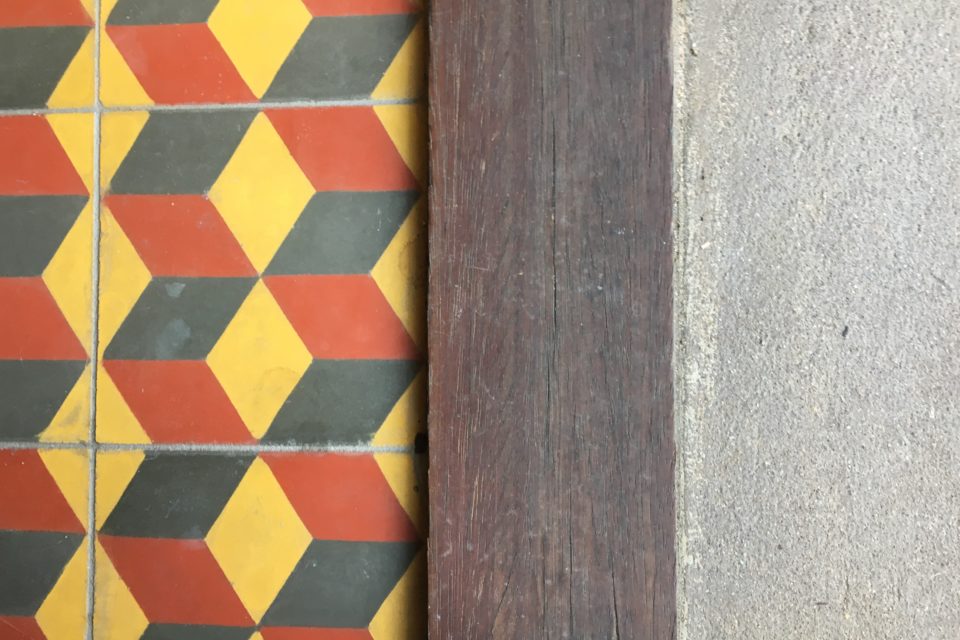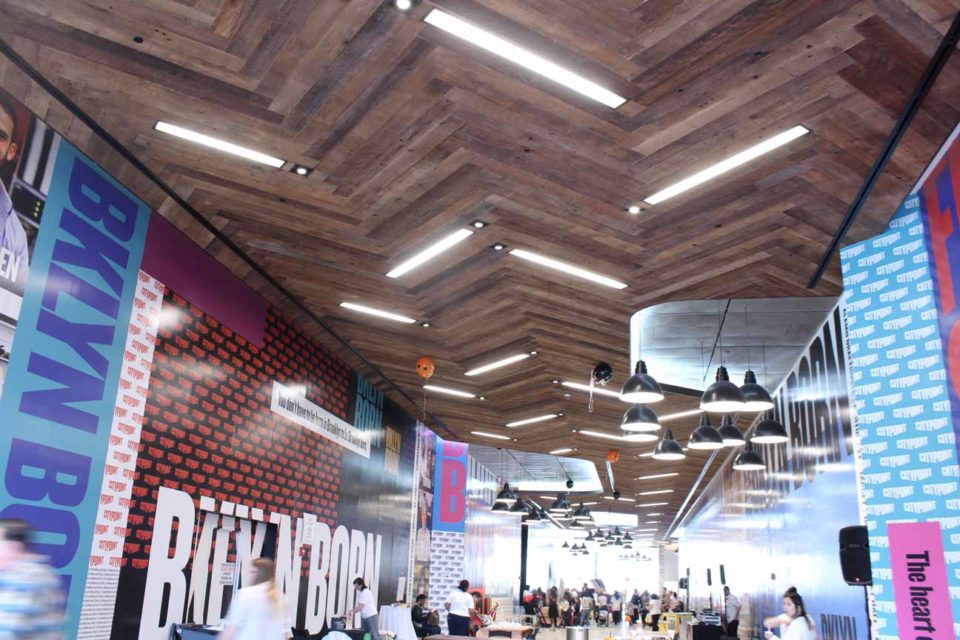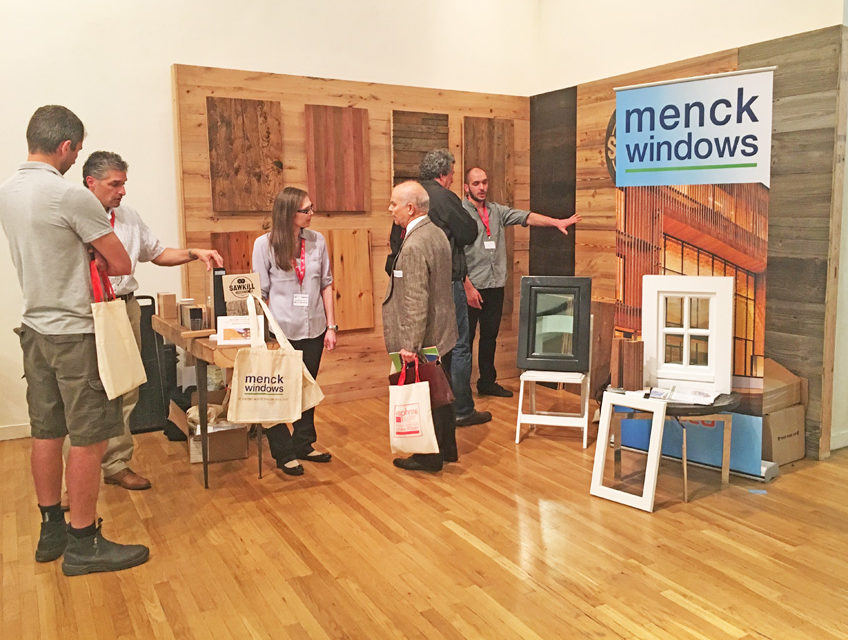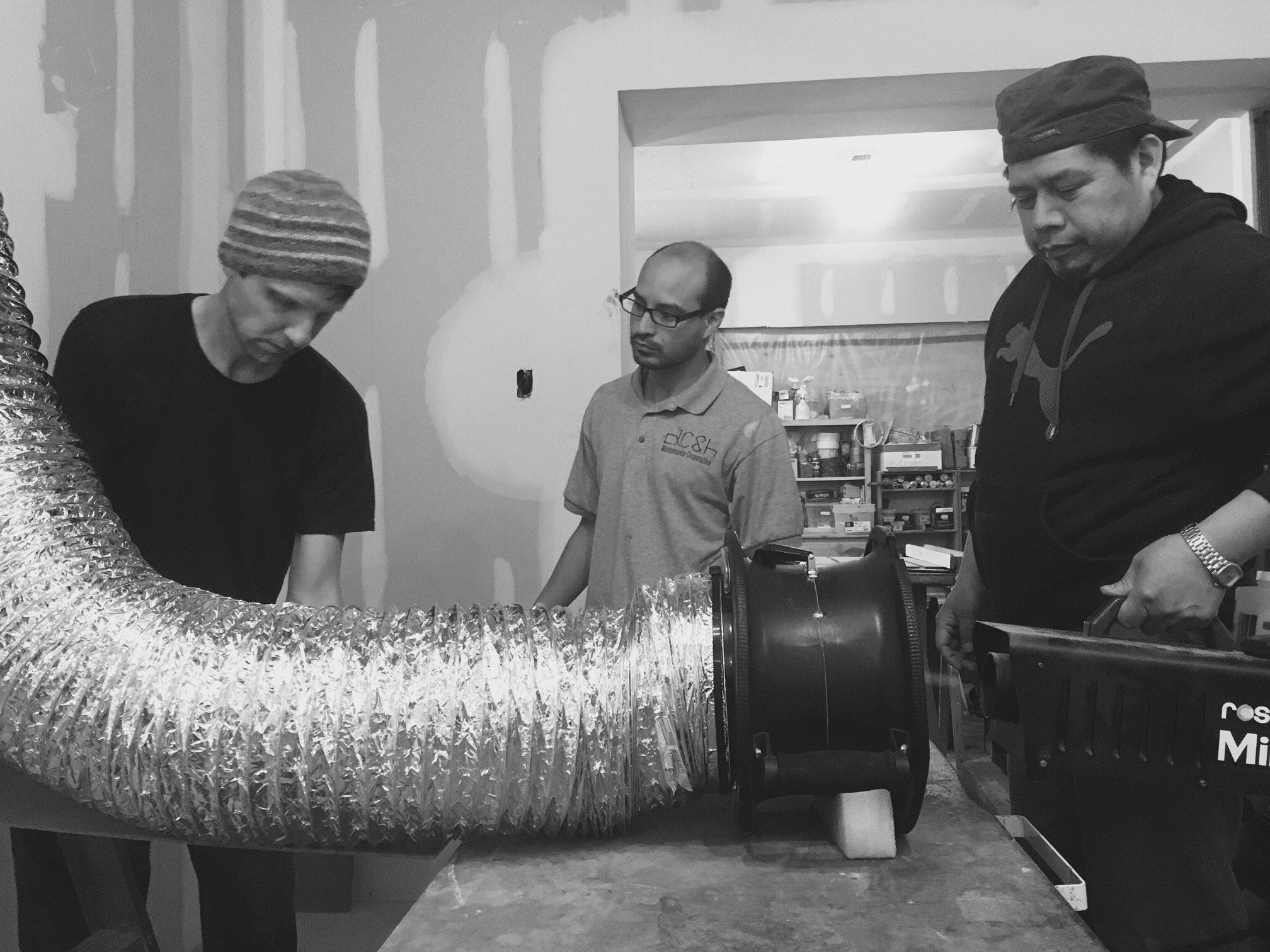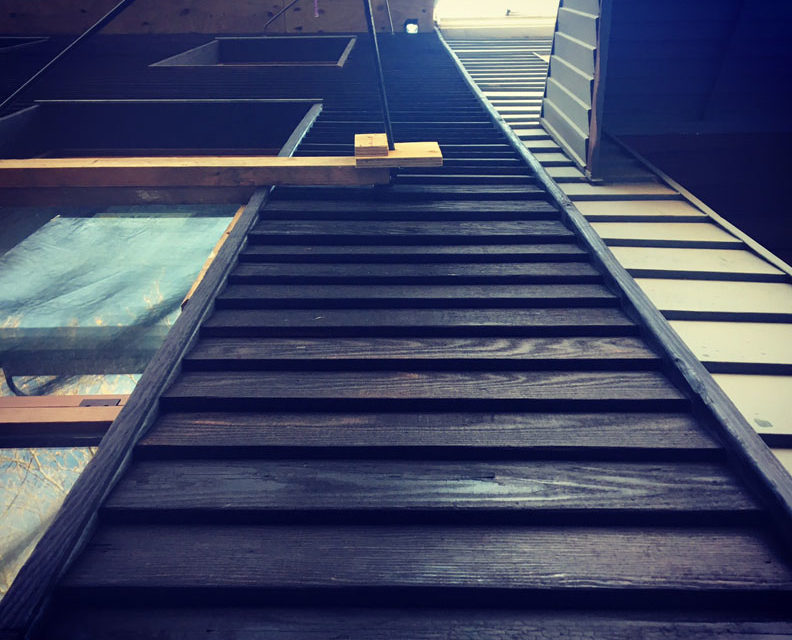 Shou Sughi Ban on reclaimed Douglas Fir at 158 Clifton, a Passive House project. The old growth woods were recovered from Worcestershire Sauce tanks in NJ, and milled into 5” & 7” clapboard. Oslo exterior finish of natural oils was applied as a top coat. The ebonized facade is characteristic of the Japanese fire treatment technique that dates to the 1700’s and serves as a modern application, furthering the exterior performance of a sustainable material, and producing a subtle and dramatic silhouette of the underlying virgin Douglas Fir figure. The darkened boards amplify a sublime quality of the Egyptian revival inspired dormers, bound to the Mansard slate roof and seeming to take flight. Less expected – an oiled and darkened reflection of climate change denial now taking root in the Capital.
Shou Sughi Ban on reclaimed Douglas Fir at 158 Clifton, a Passive House project. The old growth woods were recovered from Worcestershire Sauce tanks in NJ, and milled into 5” & 7” clapboard. Oslo exterior finish of natural oils was applied as a top coat. The ebonized facade is characteristic of the Japanese fire treatment technique that dates to the 1700’s and serves as a modern application, furthering the exterior performance of a sustainable material, and producing a subtle and dramatic silhouette of the underlying virgin Douglas Fir figure. The darkened boards amplify a sublime quality of the Egyptian revival inspired dormers, bound to the Mansard slate roof and seeming to take flight. Less expected – an oiled and darkened reflection of climate change denial now taking root in the Capital.Shou Sughi Ban, Worcestershire Sauce and Climate Change
 Shou Sughi Ban on reclaimed Douglas Fir at 158 Clifton, a Passive House project. The old growth woods were recovered from Worcestershire Sauce tanks in NJ, and milled into 5” & 7” clapboard. Oslo exterior finish of natural oils was applied as a top coat. The ebonized facade is characteristic of the Japanese fire treatment technique that dates to the 1700’s and serves as a modern application, furthering the exterior performance of a sustainable material, and producing a subtle and dramatic silhouette of the underlying virgin Douglas Fir figure. The darkened boards amplify a sublime quality of the Egyptian revival inspired dormers, bound to the Mansard slate roof and seeming to take flight. Less expected – an oiled and darkened reflection of climate change denial now taking root in the Capital.
Shou Sughi Ban on reclaimed Douglas Fir at 158 Clifton, a Passive House project. The old growth woods were recovered from Worcestershire Sauce tanks in NJ, and milled into 5” & 7” clapboard. Oslo exterior finish of natural oils was applied as a top coat. The ebonized facade is characteristic of the Japanese fire treatment technique that dates to the 1700’s and serves as a modern application, furthering the exterior performance of a sustainable material, and producing a subtle and dramatic silhouette of the underlying virgin Douglas Fir figure. The darkened boards amplify a sublime quality of the Egyptian revival inspired dormers, bound to the Mansard slate roof and seeming to take flight. Less expected – an oiled and darkened reflection of climate change denial now taking root in the Capital.